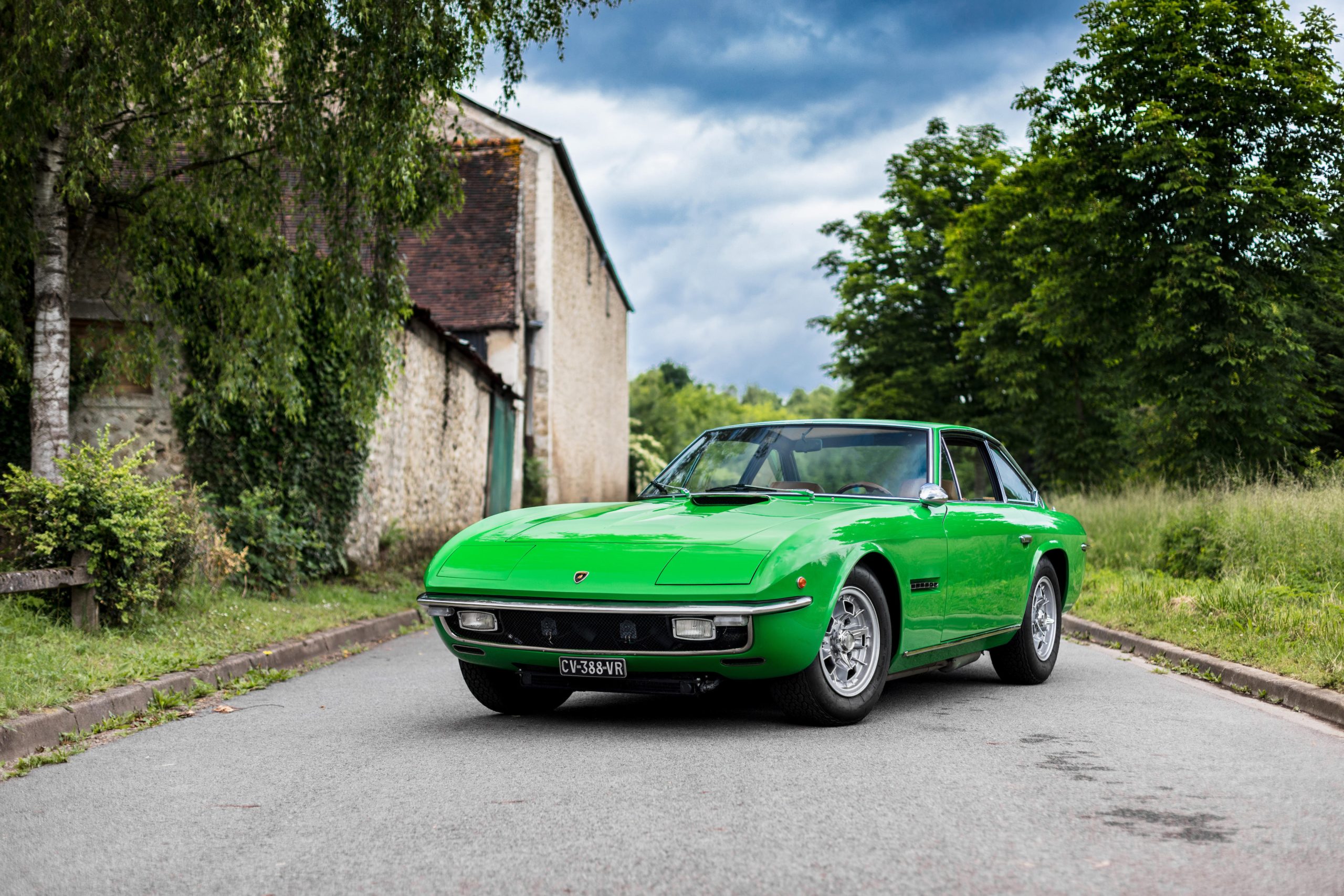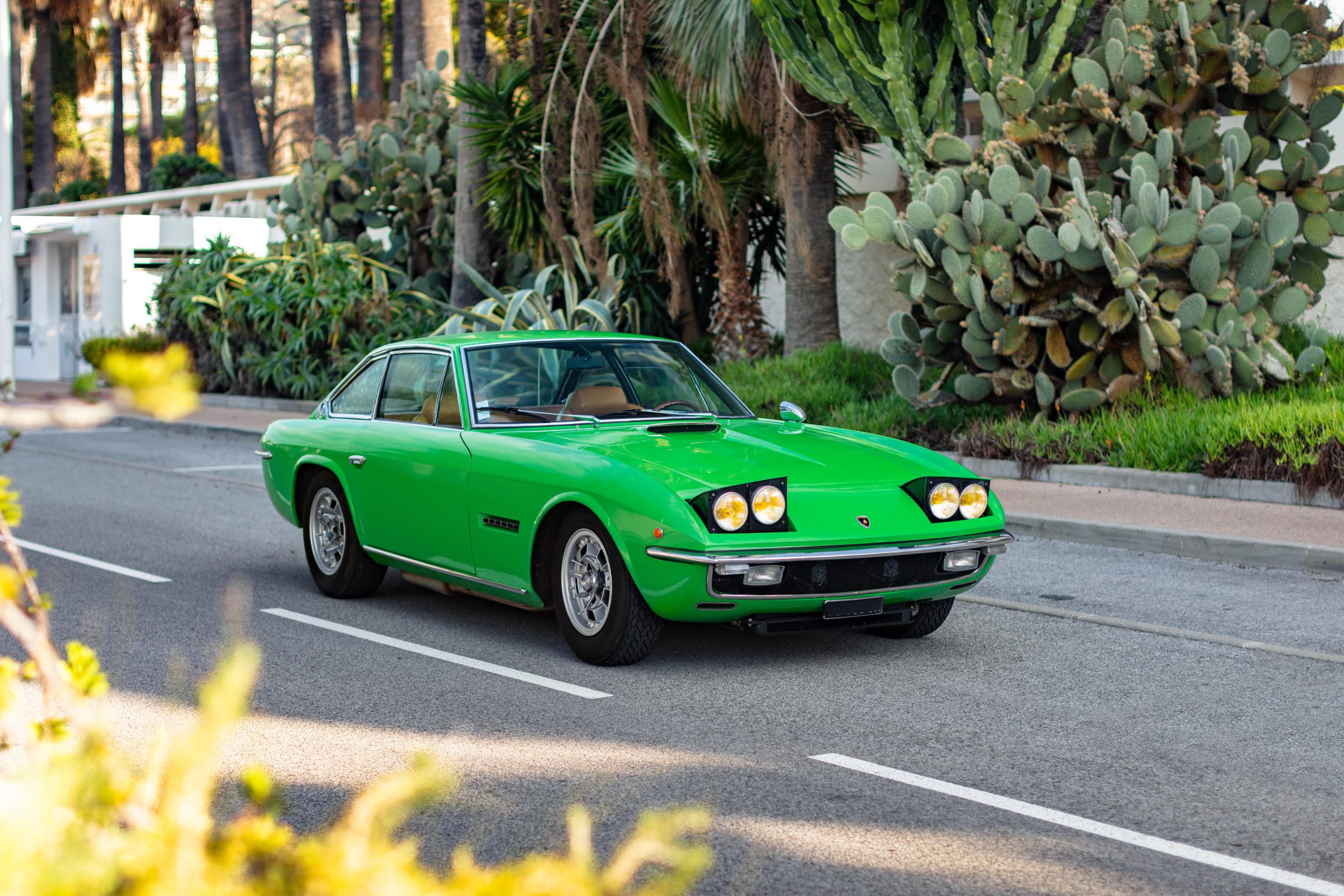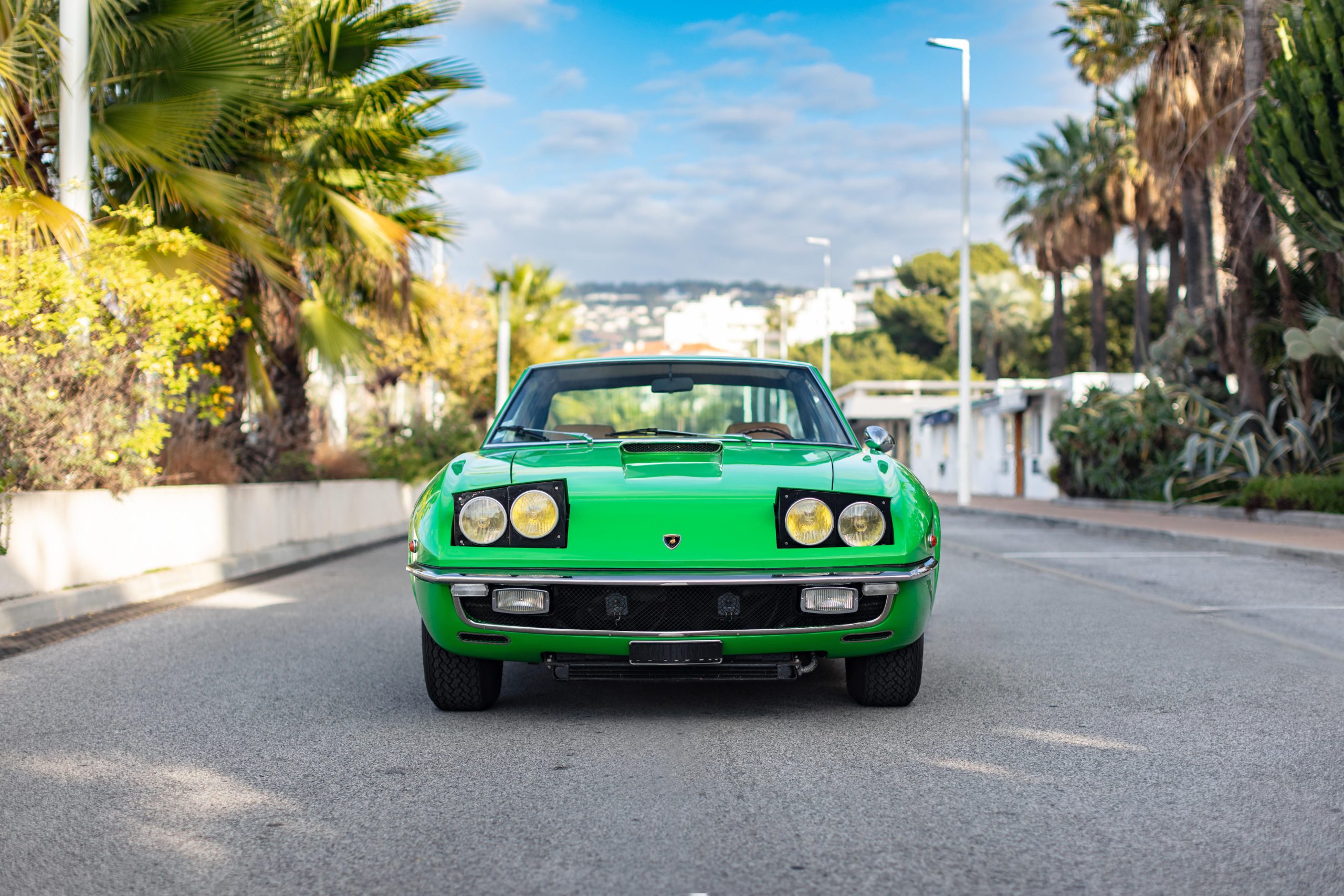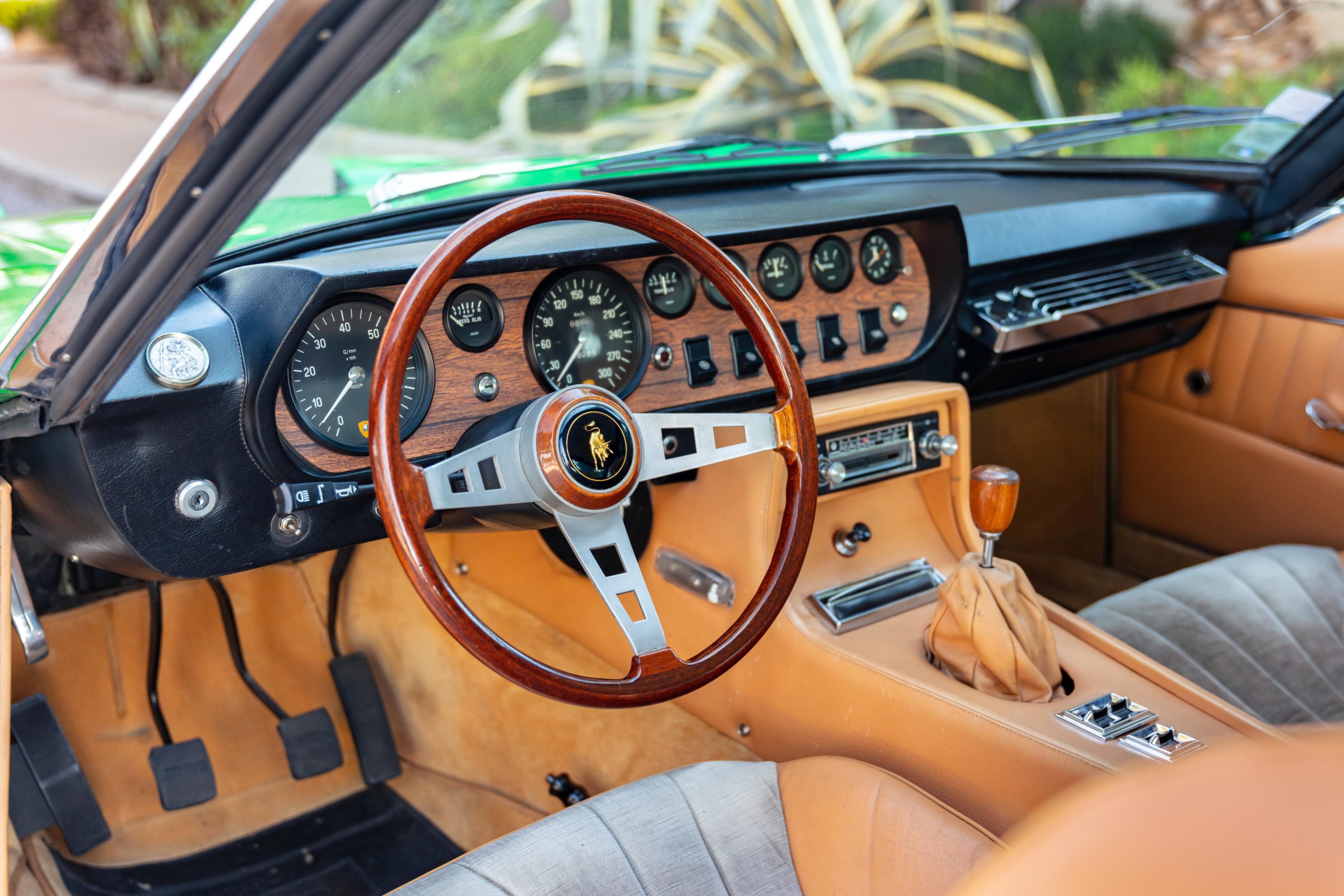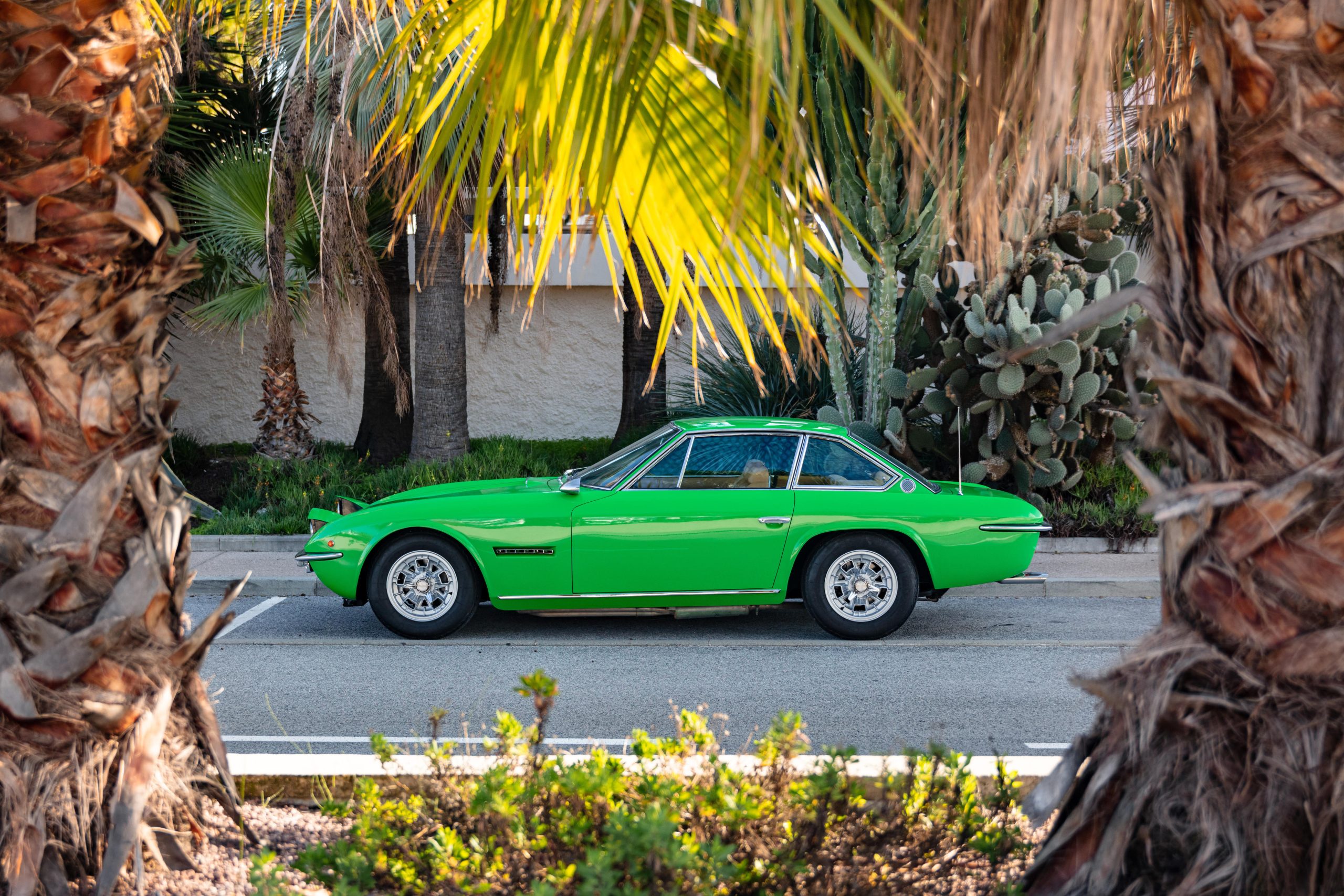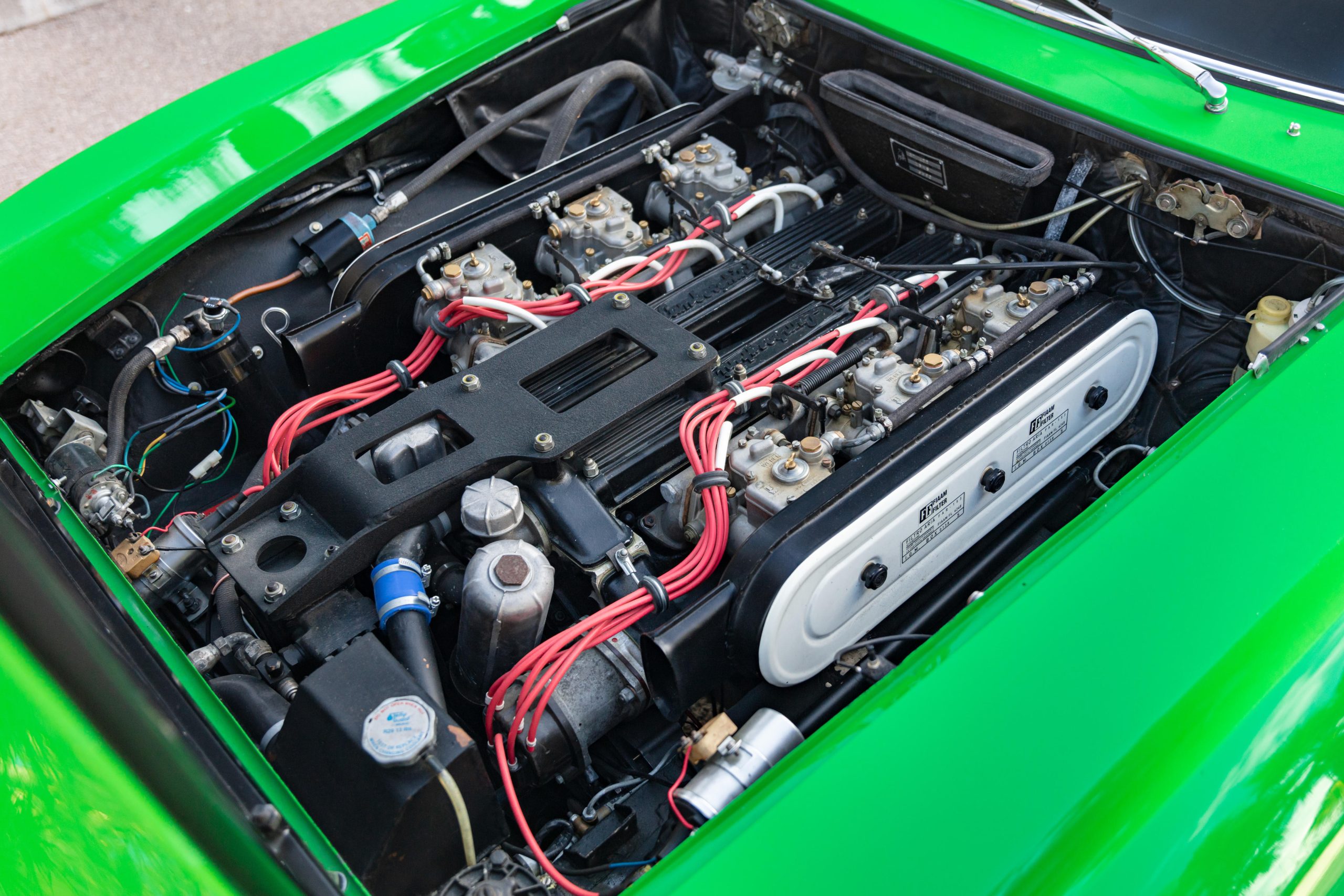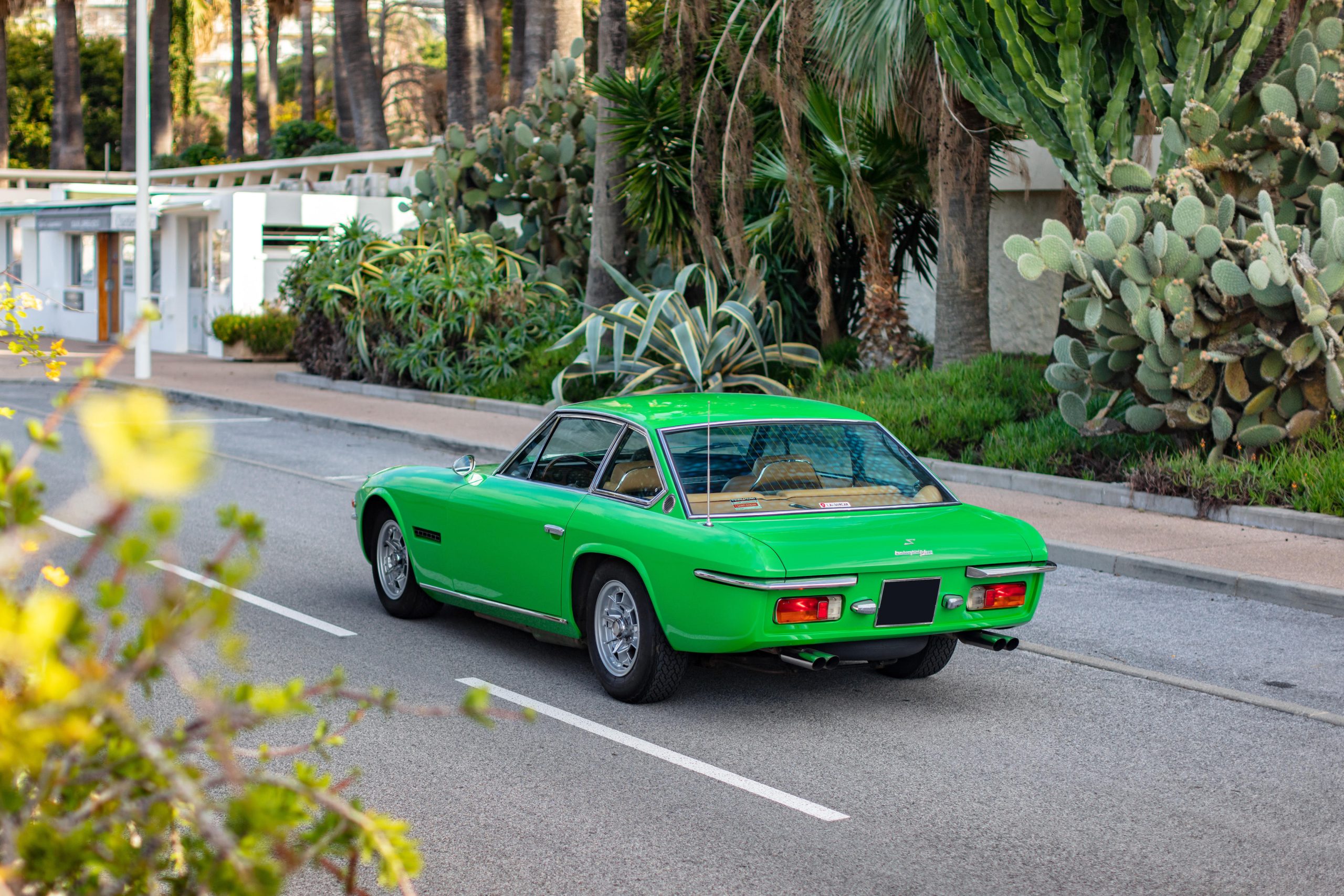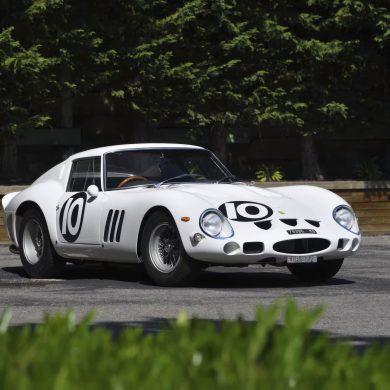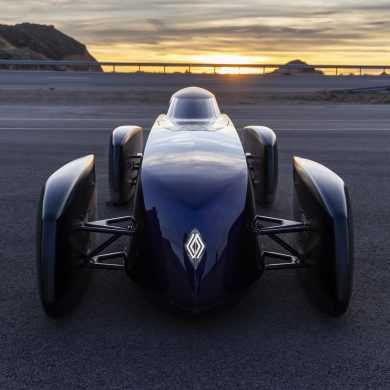Launched in 1968 at the Geneva Salon, the Islero marked an evolution from the 400 GT 2+2, itself derived from Lamborghini’s inaugural production car, the 1964 Touring-styled 350 GT. Crafted by three notable Italian engineers, the 350 GT featured a remarkable 3.5-liter, four-cam V12 by Giotto Bizzarrini, housed in a tubular chassis by Gian Paolo Dallara and Paolo Stanzani. With its four camshafts and all-independent suspension, the 350 GT outshone Ferrari’s offerings at the time. Production of the 350 GT picked up, totaling 131 units before the arrival of the 400 GT, and 247 of the latter were completed before the Islero succeeded it.
Named after the legendary bull that had fatally injured Spain’s top matador, ‘Manolete,’ the Islero featured Lamborghini’s 4.0-liter V12 engine beneath a remarkably low-slung bonnet. The engine, carried over from the 400 GT, initially produced 320bhp, later increased to 350bhp in the Islero S variant introduced in 1969. The Islero S distinguished itself with flared wheel arches, vented front wings, and an updated interior featuring more supportive seats, improved instruments, and switchgear. Suspension and brake enhancements were also part of the package.
The Islero S featured flared wheel arches, vented front wings, and an improved interior. Car magazine’s 1969 test showcased its impressive performance, reaching 157mph with stability and quietude. Acceleration was remarkable, hitting 60mph in 5.9 seconds and 100mph in 13.7 seconds. Despite agile handling on Neapolitan back-roads, only 225 Isleros were produced between 1968 and 1969, making it the most overlooked of Lamborghini’s early front-engined cars today.
Source: Bonhams Cars


